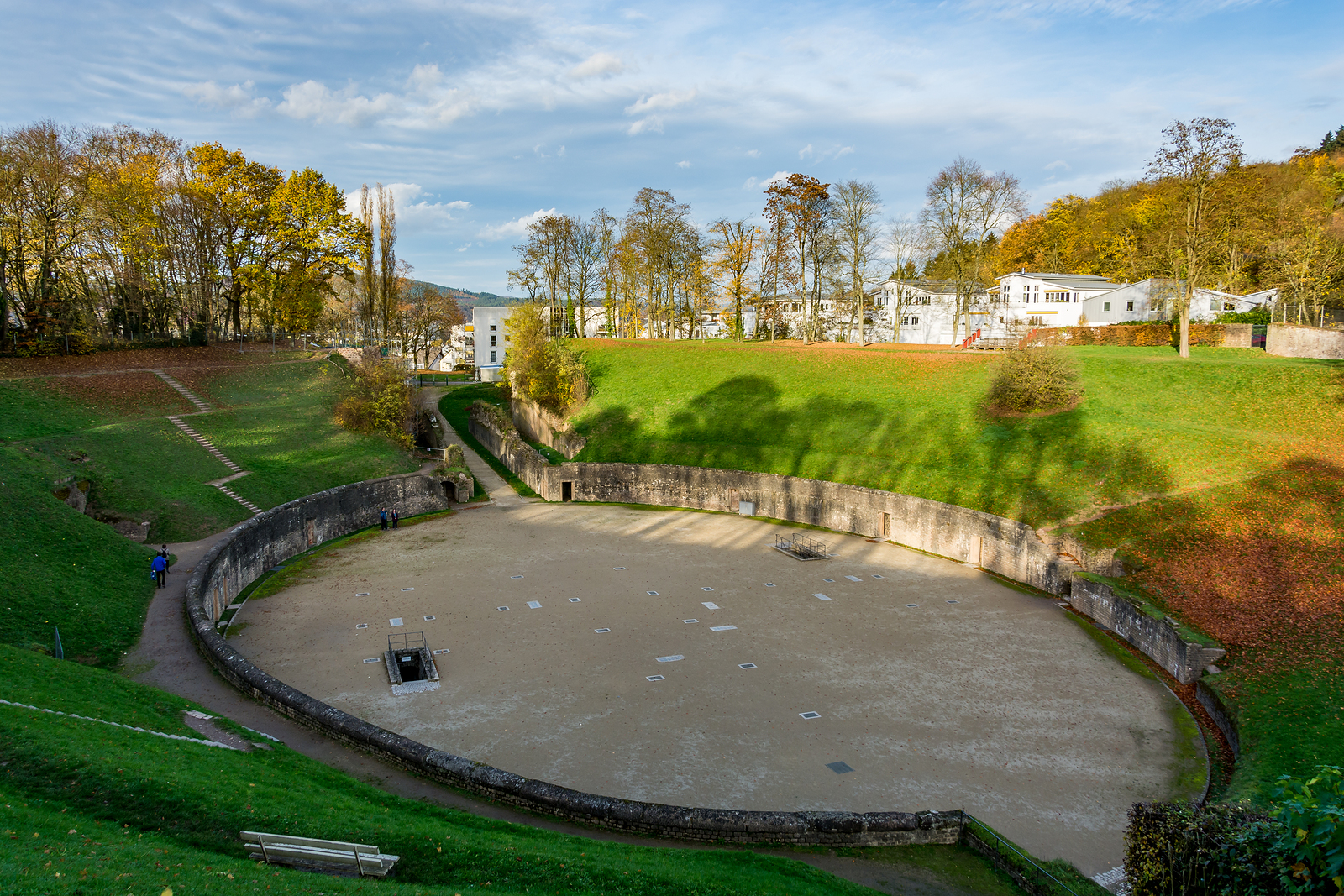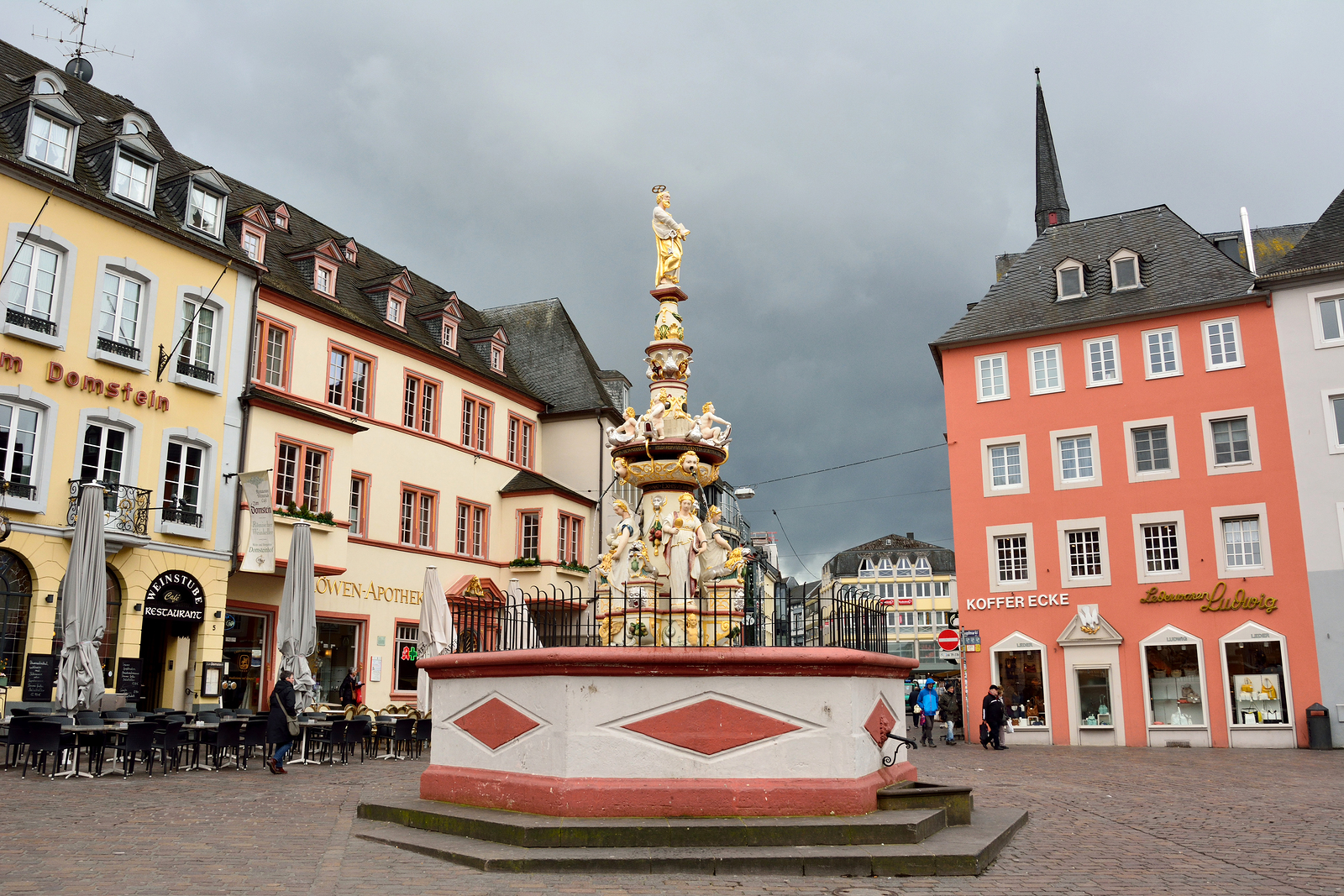TRIER, GERMANY – This seems an odd place to see hordes of Chinese tourists. But there they were, pointing cameras at the old slanted stucco building at No. 8 Simeonstrasse and clapping their hands in delight.
“They leave here happy,” said a local man named Arend.
“They come here just to visit that building.”
The building in question was the childhood home of philosopher and revolutionary Karl Marx, a hero to the Communist-raised Chinese, who have made No. 8 Simeonstrasse a shrine of sorts. Marx was actually born at No. 10 Brukenstrasse, a few blocks away, but his family moved to No. 8 when he was 2. But don’t tell the Chinese.
Marx wasn’t the only famous person to live in this, Germany’s oldest city. Trier has attracted the likes of Roman Emperor Constantine and was also the birthplace of St. Ambrose.

Above: The Romans left behind the amphitheater when they left Trier.
The Romans may have retreated from Trier but they left behind an amazing collection of artifacts which, still today, is the best-preserved collection of Roman antiquities in the world. Included in that are Roman baths, the Dom St. Peter Basilica built by Constantine, a Roman bridge, an amphitheatre and the most impressive of all, the Porta Nigra - Black Gate.
The imposing 36-metre wide gate, one of four that allowed people entry into the city but the only one still standing, was built in the 2nd century by the Roman legions using sandstone blocks carved out of the surrounding Eiffel Mountains.
Pollution in the Middle Ages turned the gates black and they’ve been known as Porta Nigra ever since. The gate is so big it was later converted to a church.
Trier, like most ancient cities, is small enough to walk. It’s labyrinth of small, narrow streets takes you on a tour of history and eventually lead back to one central point, the Hauptmarkt, Trier’s main market square.
Here you can enjoy freshly-baked Black Forest cake served at outdoor cafes that ring the impressive square and watch kids climb 15th century fountains and lovers share ice cream. The archways leading to the streets feature ornate carvings and are one of the more photographed landmarks in this UNESCO World Heritage Site which sits beside the gently flowing Moselle River.
The square is where the city’s famous Christmas Market is held annually and in the middle stands impressive St. Peter Fountain, erected in 1595 in honor of the Trier’s patron saint. What’s really incredible is that most of the buildings in the square were destroyed during Allied bombings of Trier during World War II. American servicemen who flew missions over the city are now some of its most frequent visitors.

Above: The main square in Trier is a real gathering place for tourists and locals alike.
The tiny square is filled with many interesting and striking buildings, like the Steipe, built in 1430 as a festival and drinking house. It gets its name from the supports of the open pointed arch arcades, which are called steipen in the local dialect. Not far from the Porta Negra is the basilica, built so Constantine could welcome guests to the city. What a welcome! The 30 meter high, 67 meter long throne hall is where Constantine held court. The walls of this now protestant church are 2.7 meters thick.
Two other sites that score high on the WOW! meter are the Roman baths and the Amphitheatre, which dates back to 100 AD. The stadium is the oldest Roman relic in the city and showcases perfectly preserved tunnels once used by gladiators and lions to reach center stage. The stadium was also surrounded by 20,000 stone seats, which long ago were overtaken by nature.
The Romans actually established two baths in Trier, one called St. Barbara Baths and the other the Imperial Baths. The remains of the St. Barbara Baths are still pretty impressive. They date back to 150 AD and were once the biggest baths in the Roman Empire. The Imperial Baths were built by Constantine in the first half of the 4th century. Several excavations have uncovered the entire complex and now tourists are welcome to roam among the ancient ruins.
The State Museum is another of Trier’s must sees. It houses some of Europe’s most important archaeological discoveries. Here you’ll discover treasures from the Stone, Bronze and Iron Ages, including weapons, tools and jewellery.
Then there’s Petersburgh Palace, an ornate pink structure surrounded by beautiful gardens and statues that was built in 1615 and sits directly across from the Roman Basilica.
The city’s first school, now the Stiftung Friedrich Wilhelm Gymnasium winery, is the place where Marx once studied. It’s still used today for graduation ceremonies.
A sign hanging from the archway of one of the local buildings reads: "Before Rome, Trier stood one thousand and three hundred years - may it continue to stand and enjoy eternal peace."
Trier, it appears, seems to be getting better with age.
Information
For more information on Trier, contact the city's tourist information office at
trier.de or look up information on Germany on the country's
tourist website.
About the Author
Marc Atchison is a veteran journalist and a seasoned traveller with more than 20 years of travel writing experience. As the former Travel Editor of the Toronto Star, Canada's largest newspaper, and now Editor-in-Chief and Senior Writer for TraveLife magazine (Canada) and travelife.ca, Marc has been to over 100 countries in the world. Japan is one of his favorite destinations and he's been there on numerous occasions.